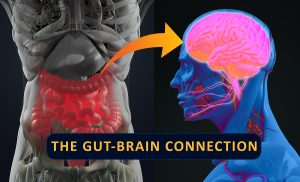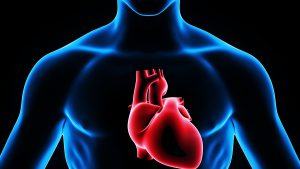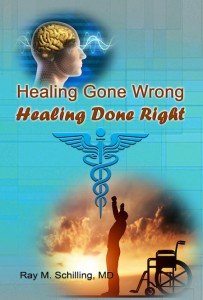I found an article dealing with combatting aging using artificial intelligence. It comes from the April 2018 edition of the Life Extension Magazine. Both of those concepts sound intriguing: “combatting aging”. It would be nice, if this would be a possibility! And “artificial intelligence” (A.I.) sounds mysterious. LifeExtension researchers have partnered up with an A.I. group, called Insilico Medicine.
Why did Life Extension engage in this project? Many people have side effects with the drug metformin, which is an old diabetes drug. It turns out that metformin stimulates anti-aging genes that help to elongate telomeres and also activate genes that prolong lives otherwise. The thought was to find out how exactly metformin protects against age-related disorders. Once researchers located the genes, they may be able to find herbs that can do the same as drugs with less side effects. Often herbs are safer than drugs.
Background regarding metformin
The FDA accepted metformin (trade name Glucophage) as the first-line therapy for type 2 diabetics, particularly if they are overweight or obese.
Side effects include gastrointestinal irritation with vomiting, cramps, diarrhea and flatulence. Even though this drug is not new, research does not fully understand all metabolic effects of metformin.
Promise of metformin as an anti-aging drug
A trial in Great Britain found that metformin has an interesting anti-aging effect. Diabetics on metformin lived longer than a control group of patients without diabetes who were not on metformin. The diabetics lived 15% longer than the controls. Further experiments with human cells and animal experiments showed that metformin is able to stimulate the mitochondria without producing as many free radicals. Free radicals cause inflammation that leads to heart attacks, strokes, Alzheimer’s and cancer. The suggestion is that all of these diseases will be suppressed when the patient is on metformin.
Mimicking the effects of metformin with three herbs
The co-operative research between the Life Extension researchers and Insilico Medicine researchers concentrated on finding data that would replace the beneficial effects of metformin with three herbs stimulating the same life-prolonging targets in human cells. This is not a small task. The following three herbs in combination cover more than 78% of the actions of metformin.
Withaferin A (found in Ashwagandha)
Weight loss
Withaferin A is a component of the life-prolonging herb ashwagandha. This herb is in use in Ayurvedic medicine because of its ant-inflammatory action; it is also anti-diabetic, anti-cancer, anti-obesity and has appetite-regulating activities. An important observation by researchers was that within 21 days of exposing obese mice to withaferin A they lost 23% of their weight. Other mice on the same diet received control solutions and did not lose weight.
Effect on neurodegenerative disease
There is a neurodegenerative condition, called Lou Gehrig disease (=amyotrophic lateral sclerosis). A group of mice that were the subjects of genetic modification to develop Lou Gehrig disease received withaferin A in their food. Compared to controls without withaferin A they had a 39% reduction of damaged proteins in their spinal cords. They also had 60% less loss of motor nerve cells. These are the nerve cells that pass on the electrical signals between the brain, the spinal cord and into the muscles. The life span of these animals that received withaferin A was 5.4% longer than control animals.
Ginsenoside (found in Ginseng)
The structure of ginsenoside is steroid-like. As the name already suggests, it is present in ginseng. The Insilico Medicine team noticed that it affects many of the same age-decelerating pathways like metformin. Ginsenoside prevents damage to the DNA and prevents loss of mitochondria, particularly in the brain and heart. In cancer cases ginsenoside also suppresses cancer stem cells, which slows down cancer growth. All in all ginsenoside reduces inflammatory changes; it also fights neurodegenerative diseases, cardiovascular diseases and cancer.
Gamma linolenic acid (present in borage seed oil)
Gamma linolenic acid (GLA) is a fatty acid. The source of it is the evening primrose plant, black currant oil or borage. The Insilico Medicine researchers found that many pathways that metformin triggers are also responding to GLA. GLA can reduce inflammation, help with adaptation to stress can modulate metabolism and participates in regulation of gene expression. GLA is also part of energy sensing in diabetes and obesity. It also can slow down cancer development.
Discussion
One has to be cognizant of the fact that LifeExtension is in the business of selling herbal supplements. It would be in the company’s interest to find an herbal combination that mimics what Metformin does. They say they have found it; so we are told in the April 2018 article of the LifeExtension magazine. But a 78% overlap of actions when the herbs were compared to metformin is not a 100% overlap.
Conflict of interest
There seems to be a conflict of interest between doing basic research on anti-aging and marketing an anti-aging product. I like to see confirmation of these findings by other independent researchers. I am not too keen to spend $1.40 every day for the rest of my life in the hopes that this herbal concoction would slow down aging. Also to state that this mix of three herbs would do the same as Metformin is a large leap of faith. At this point I am not even ready to swallow metformin just because of one trial in England that showed a beneficial anti-aging effect.
Conclusion
The old dream of finding a pill for anti-aging is alive and well. If you believe this research you are likely to buy this pill and keep on taking it for the rest of your life. But I am not so certain that either swallowing metformin or swallowing this herbal concoction will do what the researchers were hoping for. They have done some basic research with mice and rats. But they tested each of the herbs separately, and the researchers have then mixed the herbs and claim, that this mix will do what each single herb in isolation has done. We do not know anything about the interaction between these herbs. We do not know whether there will be the same anti-aging results with the mix. All these claims are yet subject to more testing.
Proposed clinical trial
I like to see a human trial where the anti-aging pill of Life Extension is given once per day for several years (let’s say 5 years). After that anti-inflammatory indicators, telomere length and toxicity should be tested in each subject that is part of the study. If trials like this were successful in humans, I would consider buying this new supplement, but not any earlier!















